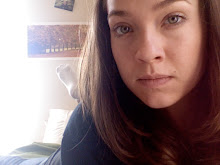Part I:
1. Stephen Glass-He was a journalist who fabricated the majority of his published stories for The New Republic. We watched Shattered Glass which was about his story.
2. Jayson Blair-He was a journalist who was forced to resign from The New York Times because he fabricated elements of his stories. He made up comments, scenes, and details. He also used details from a photograph to make it seem like he had actually been there.
3. Jack Kelley- He made up some major news stories, at least eight. He stole at least 24 quotes from other publications and lied during speeches given for USA Today. In 2000, he took a picture of a woman in Cuba and made up a story about her dying while fleeing Cuba via boat. The events never happened to that woman. He resigned in January after admitting that he had conspired with a translator to mislead some editors.
4. Janet Cooke- Wrote Jimmy’s World, a fabricated story about an eight year old heroin addict. The city government insisted on finding the boy because they wanted to help him. Cooke refused to give up her sources but the city government went searching for him anyway. She won a Pulitzer Prize for the story, and the next day the editor of Washington Post discovered her lies. Cooke finally admitted her mistakes.
Part II:
Rebecca Laman is the name of the girl who was accused of plagiarizing hr work in the Mustang Daily. Because of the Family Educational Rights and Privacy Act, Cal Poly was not allowed to release her real name for The Tribune and New Times. She stole information and used it in her articles for the Cal Poly men’s barbershop quartet, the movie “Fantastic Four,” and the “dos and don’ts” article for men. The mustang Daily did not release Laman as the writer. These three stories were corrected for the public just after the incident, so people assumed it was the writer, Laman who had plagiarized.
Part III:
When I was first hearing about Hack Heaven from the movie, I was wondering how it would be at all possible for website hackers to unite at a convention without security or struggles. “The national Assembly of Hackers” seems rather outlandish to me. I was also finding it very ridiculous that Ian’s Parents would just willingly go along with the whole ordeal. Also, it seems unrealistic that Jukt Micronics would be willing to hire anyone under eighteen to fix their website. Even if they were to hire Ian they would not just show up at his house one day, like the article implies. These elements of the story are what seemed to make the story so, “good” and “amazing” in the first place, I suppose. After reading Jimmy’s World, I assumed that someone would have found the boy and tried to help him, if he were real. The man, Ron also would have been found. The whole story seemed somewhat ridiculous, especially the fact that they would just let a reporter come in and observe everything that was occurring.
If I were an editor, I would want to, first of all, make sure that all of the people named in the article actually existed. I’m not sure how an actual editor does his/her job but I would ask the writer to back up and provide proof for all of their sources. I would also personally investigate “outlandish” sounding parts of the article. If something seems like it could never really happen, I would inquire deeper into the story. If plagiarism turned into a really large problem, I would most likely hire an investigatory team to find proof for all of the stories being published. It would be a very hard job, though.
If a journalist is caught intently plagiarizing, they should never write a news story again. They should be fired immediately and forced to retire from the profession. The whole idea of journalism is to provide news of what is going on in the world to readers. The writer can, then, never be trusted to write truthfully again. If the plagiarism is a small error made unintentionally, e.g. the minibar in the hotel rooms, the writer should be strictly taught how to avoid such mishaps, but not fired. I believe firing should be based off of whether or not the mistake was made intentionally by the writer. People make mistakes all the time; however, choosing to use false information is not merely making a mistake and should be punished as a crime.
Part IV:
Brian Walski was fired because he took two real photos and combined them into one fake photo. He intentionally manipulated the photo to make it look like the solder was gesturing to the man with the baby. A photo is supposed to “speak a thousand words,” and give truth to a story. I, honestly, look at a photo to be truer than a quote because photos are not handwritten, but taken from a camera. Altering a photo is just as bad as getting a false quote. Again, the whole point is to report truth to the readers.
Editor, Michael Kelly continued to edit and write for other magazines and papers. His career ended at The New Republic in 1997. He wrote weekly columns for National journal and The Washington Post. In 1998, he became the editor of National Journal. He was the first American reporter to be killed in the Iraq conflict on April 3, 2003; he was reporting for The Atlantic.
Subscribe to:
Post Comments (Atom)

No comments:
Post a Comment